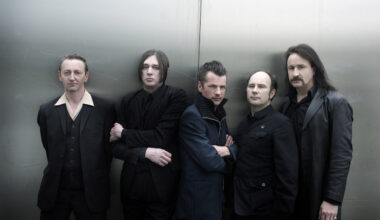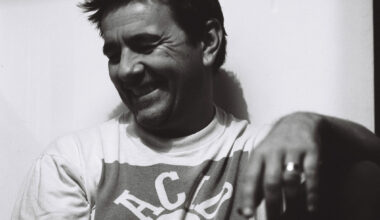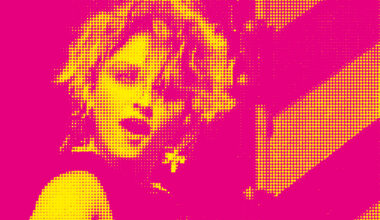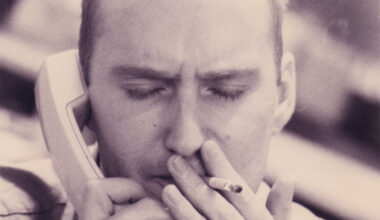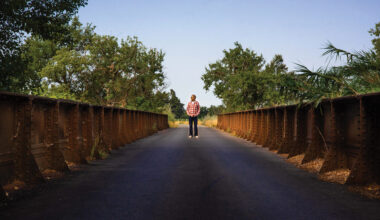For a few years during the 1990s, David Bowie was the Jeremy Paxman of art critics, compelling the rich and famous to justify their exhibition catalogue waffle

When David Bowie released ‘Earthling’ in 1997, critics chastised him for following trends rather than inspiring them. His 21st studio album, which featured drum ’n’ bass and electronic music, led The Philadelphia Inquirer to accuse him of “jumping on bandwagons”, while UK music monthly Select was even more excoriating.
Musically, Bowie might have led the way in the 1970s, but he was always a cultural sponge, continually absorbing other people’s ideas. After an artistically uneven period in the 80s, Bowie began learning from masters old and new again when, in the 90s, he joined the editorial board of Modern Painters magazine alongside serious art writers like Martin Gayford and the novelist William Boyd.
Elsewhere that decade, Bowie was sucking up inspiration from David Lynch, who directed him in ‘Twin Peaks: Fire Walk With Me’ in 1992, while Nine Inch Nails, Goldie and Underworld were just some of the artists who provided musical stimulus.
He became a critic himself when he accidentally landed a scoop with the enigmatic Polish-French artist Balthus, who happened to be his neighbour in Switzerland. The autumn 1994 issue of Modern Painters carried a 20-page feature by the Thin White Duke and the even thinner Balthus, titled ‘The Last Legendary Painter’.
After the success of his Balthus piece, Bowie went on to interview other artists for the journal, including Tracey Emin, Julian Schnabel and Jeff Koons. Those 1990s magazine articles, where he’s asking the questions rather than answering them, perhaps reveal more about the man than any of his interviews as a musician, where he would launch a charm offensive against the interviewer while being deliberately vague with his responses.
There was no such equivocation as a writer. In an interview with Koons in New York in 1998, picking up on something the artist had said nine years earlier about his aim to “lead the bourgeois into a state of entropy”, Bowie simply asked, “What the fuck does that mean, Jeffrey?”
Stunned, Koons gave a rambling answer about trying to “disarm people” which he concluded by saying, “Sorry, I’m not doing well there as far as verbalising that”.
And then there was enfant terrible Damien Hirst – the Young British Artist (YBA) prone to carving up 300-pound tiger sharks and preserving them in formaldehyde for eternity (or at least until they leaked at a later date). This provocative piece, ‘The Physical Impossibility Of Death In The Mind Of Someone Living’, impressed Bowie, as did the controversial artist’s other work.
Hirst had his detractors, but Bowie was a strong advocate of his oeuvre. While many artists were glib and ironic where death was concerned, Hirst was prepared to stare it in the face. Bowie interviewed him for Modern Painters in 1996, contemplating “life, death and everything”.
But it wasn’t all grappling with big questions. Bowie and Hirst had fun. Having seen some of the colourful exhibits Hirst’s spin machine could make at the artist’s ‘No Sense Of Absolute Corruption’ show at New York’s Gagosian Gallery that same year, he decided he wanted to have a go himself.
Hirst’s inspiration for the device – which revolved so you could splatter paint onto it – had come from watching John Noakes make a rudimentary picture with something similar on ‘Blue Peter’ when he was nine years old.
“I love making spin paintings with kids,” said Hirst, writing for Sotheby’s auction house after Bowie’s death. “I’ve got a spin machine that I take to my kids’ school and get all the kids doing them. The joy of making them is what somehow makes them great art. All those crazy moments throwing paint around and mostly not knowing what you’re doing is distilled in the final result, and that’s why they’re so amazing.”
Hirst later collaborated on spin artworks with The Flaming Lips’ Wayne Coyne, and Ed Sheeran used it to design the cover of ‘Divide’, but David Bowie was the first rock star to approach the wheel with zeal.
“David was like a child,” enthused Hirst. “You have to live in the moment and give up all your preconceptions. Let yourself go, just have fun and let the universe do its thing. He was brilliant fun to spin with.”
Ever dapper, Bowie wore an expensive suit to the studio, which got ruined.
“He said he didn’t have any old clothes but didn’t mind getting paint on the new shit he was wearing,” recalled Hirst. “I loved that!”
His pricey watch went on the wheel too, and was flung off and smashed.
“He never even picked it up,” said Hirst, gleefully.
One of the pieces Bowie and Hirst collaborated on, ‘Beautiful, Hallo, Space-Boy Painting’, sold for a not inconsiderable £785,000 when the singer’s possessions went under the hammer at Sotheby’s in 2016. It’s likely John Noakes went to his grave the following year never knowing that he’d indirectly inspired the man behind Ziggy Stardust and Aladdin Sane to make an artwork that fetched the best part of a million quid.
Bowie exhibited some of his other art for War Child in 1994 in response to an appeal from Brian Eno, with proceeds from the sale going to a children’s therapy centre in Sarajevo. Other artists who donated their own personal works included Paul McCartney and Pete Townshend.
“I think it’s all exceptionally good – exceptionally surprising,” said Bowie, diplomatically, when interviewed by ITV News. “Some of it I don’t rate very much, but then some of it is really better than a lot of graduation pieces that I’ve seen at art schools.”
The 50th anniversary reissue of David Bowie’s ‘Aladdin Sane’ is released by Parlophone
